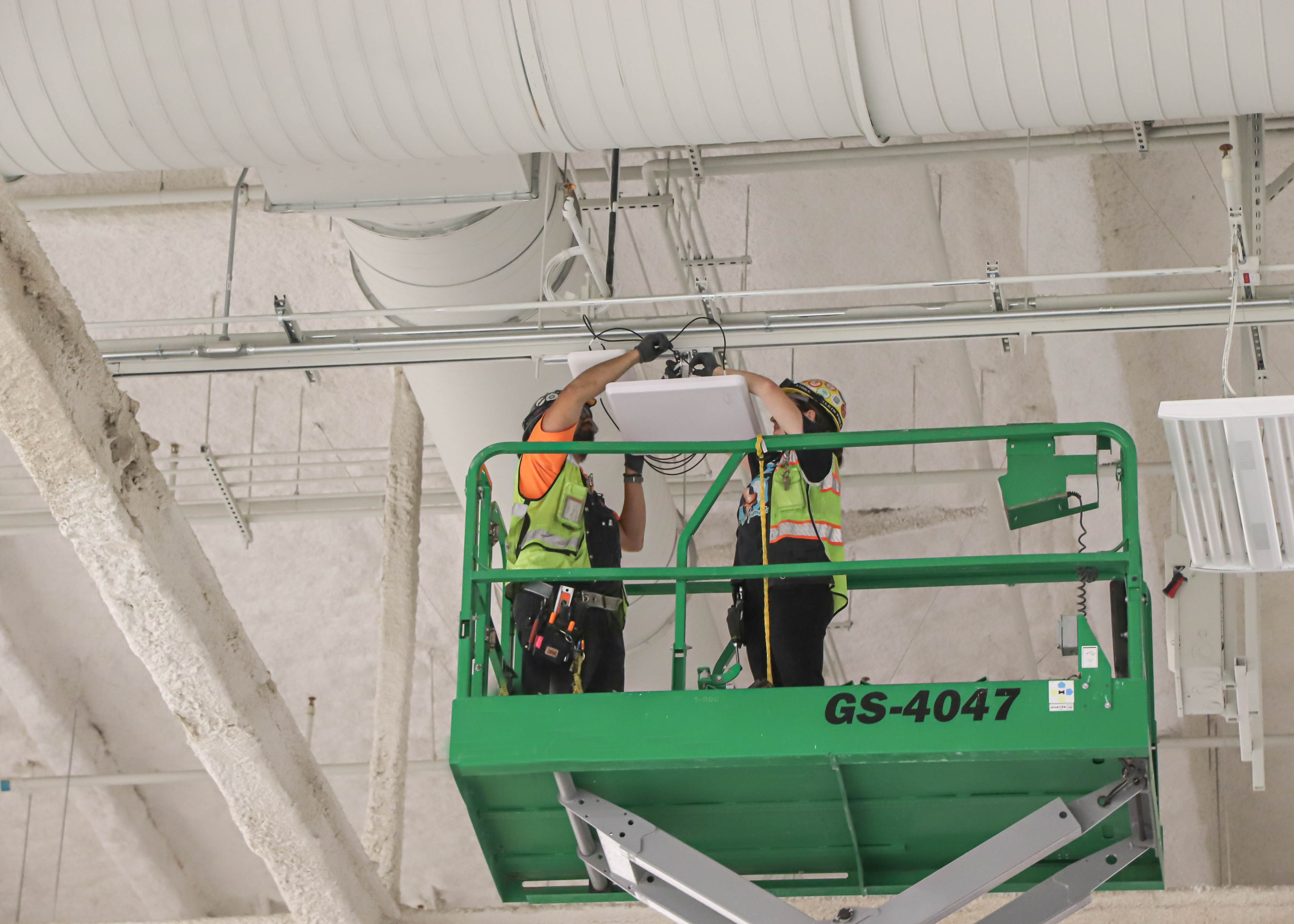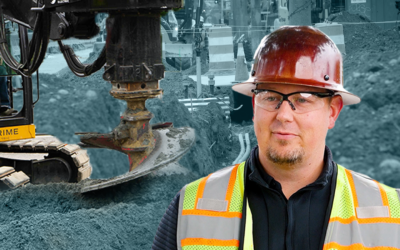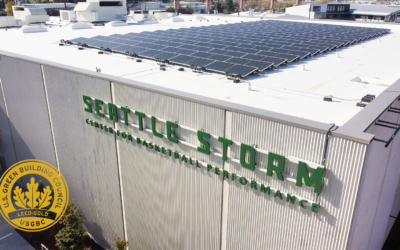The construction industry is on the brink of a revolution as energy efficiency and sustainability become increasingly important for new buildings. One significant factor in this transformation is the integration of 5G technology and smart buildings. Cellular coverage in new construction buildings provides a multitude of benefits, from connectivity improvements to optimization of energy use. The energy efficiencies unique to smart buildings can help achieve LEED certification and carbon neutral goals for new construction builds. But what makes a smart building so smart?
Smart Buildings
Smart buildings were first identified as “intelligent buildings” in 1981, a term used by United Technology Building Systems Corporation. These early smart buildings used single and multi-function electronic systems to control HVAC to minimize energy consumption and improve overall efficiency. Today, smart buildings perform that function and more. Current technologies provide a unique opportunity to find more efficient ways to acquire data inside of buildings. This data allows owners and property managers to track where people go, monitor temperature and humidity for preventative maintenance, and monitor tagged assets throughout the building – each of these allowing for more precise control of energy use. The modern smart building hinges on building a wireless ecosystem to support an organization’s goals. To build a smart building, you must start with a simple question: What do you need from this building? This is the foundation of a wireless communication strategy.
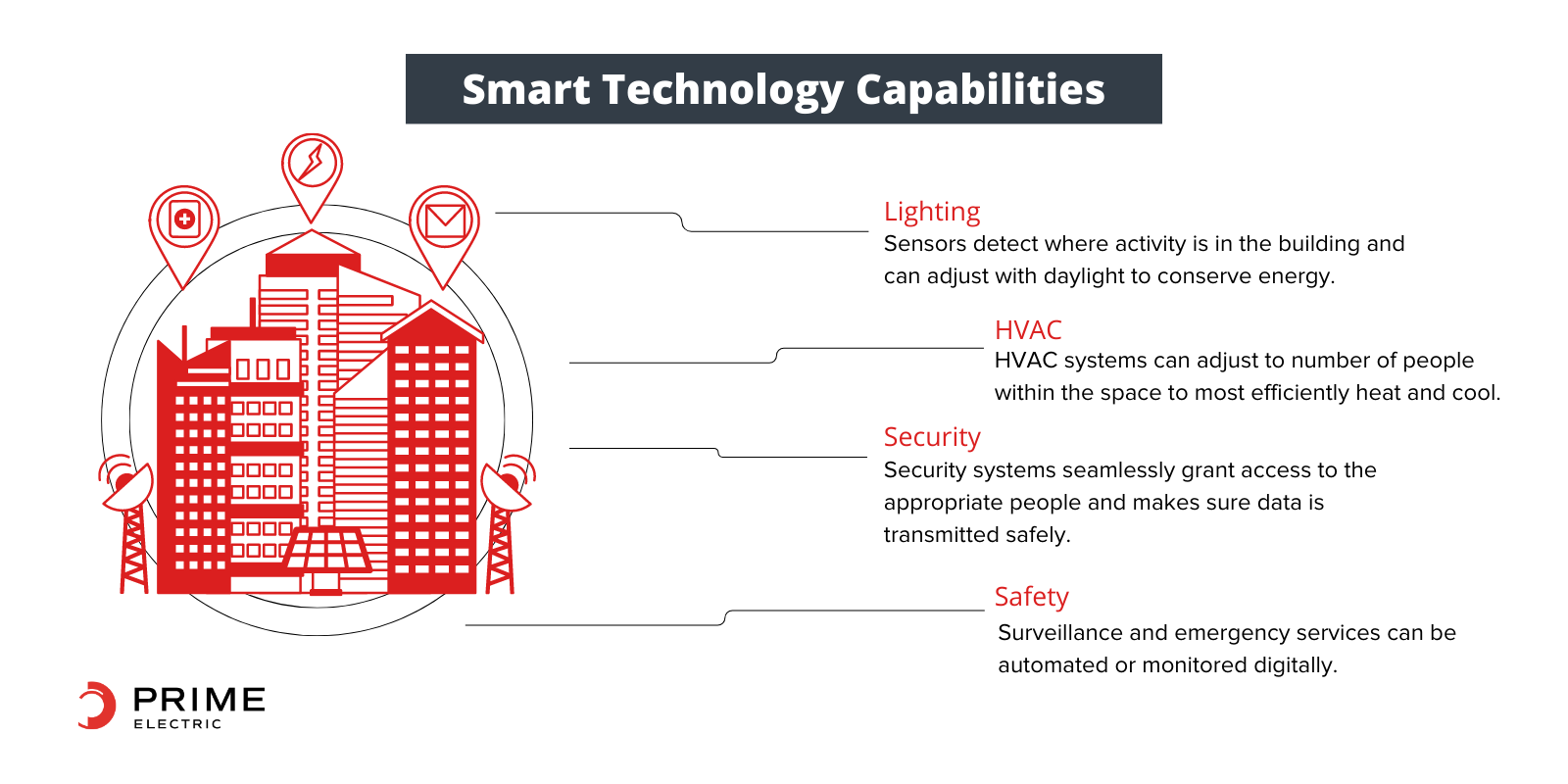
Wireless Communication Strategy
- Define Goals: Buy-in from all stakeholders is necessary to set parameters for potential technology investments.
- Utilize DAS Strategy: By involving a wireless DAS integrator during the design phase, architects and engineers can ensure that the necessary infrastructure is in place to support seamless connectivity throughout the building. Utilizing DAS strategies in the early stages of building can circumvent network overload issues that can come with traditional wired LAN systems. Cellular devices and others that use 5G or private LTE networks can be moved off WIFI and onto new channels to reduce overall network traffic.
- Seamless Integration: 5G enables seamless integration of Internet of Things (IoT) devices, paving the way for intelligent building management systems that optimize energy use and create a comfortable environment for occupants. IoT devices can control lighting, HVAC, security, and more.
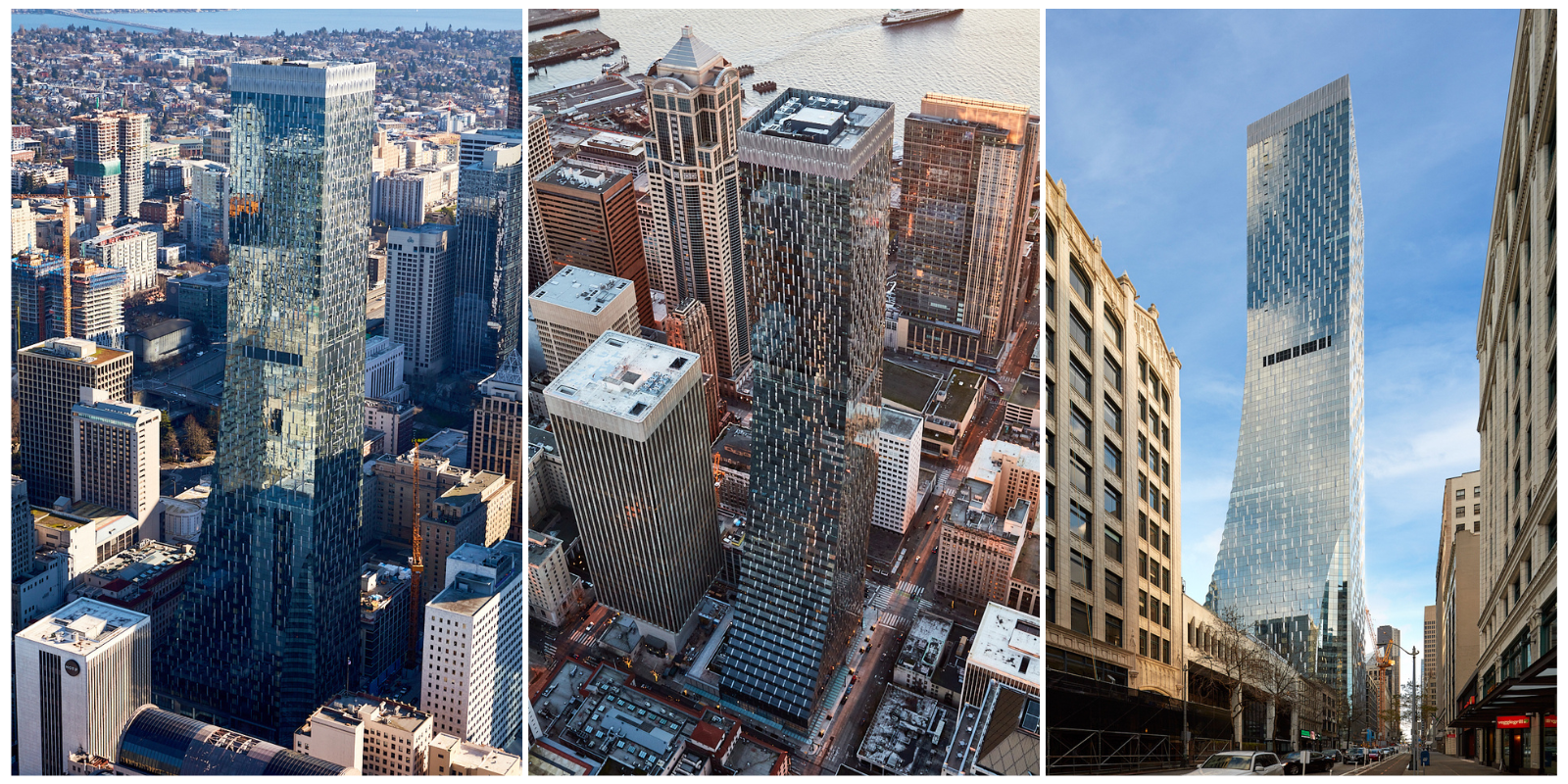
Benefits of Building Smart
According to a study by the U.S. Green Building Council, LEED-certified buildings can command rent premiums of up to 20% compared to non-certified buildings. Furthermore, smart buildings offer enhanced comfort, security, and convenience for occupants, increasing tenant satisfaction and retention. To offset the initial costs of implementing 5G and smart building technology, innovative funding solutions can be employed. For instance, using Energy Performance Contracts (EPCs) allows for the costs of energy efficiency upgrades to be funded through the savings generated over time. By integrating 5G and smart building technologies, property owners can also attract environmentally conscious tenants who are willing to pay a premium for sustainable, energy-efficient spaces. The connectivity improvements made with integrating these technologies is also attractive to tenants – over 80% of all cellular calls originate inside of buildings and buildings with cellular connectivity can command higher rent.
By embracing these emerging technologies, we can shape a more sustainable world. Prime Electric’s Wireless Group is primed and ready to be a key part of Seattle’s push towards green construction. PRIME designed and built the infrastructure for one of the first truly “smart-ready” buildings in Seattle. Opened in 2021, the Rainier Square Tower is the second tallest building in Washington State, and the first Washington skyscraper to have a single, converged network that supports every system in the building, from elevators to building controls. Designed, programmed, and installed by PRIME, the network is converged both logically and physically, creating an easy and immediate upgrade path for future smart building technologies as they develop. The future of construction is undoubtedly green and connected.

